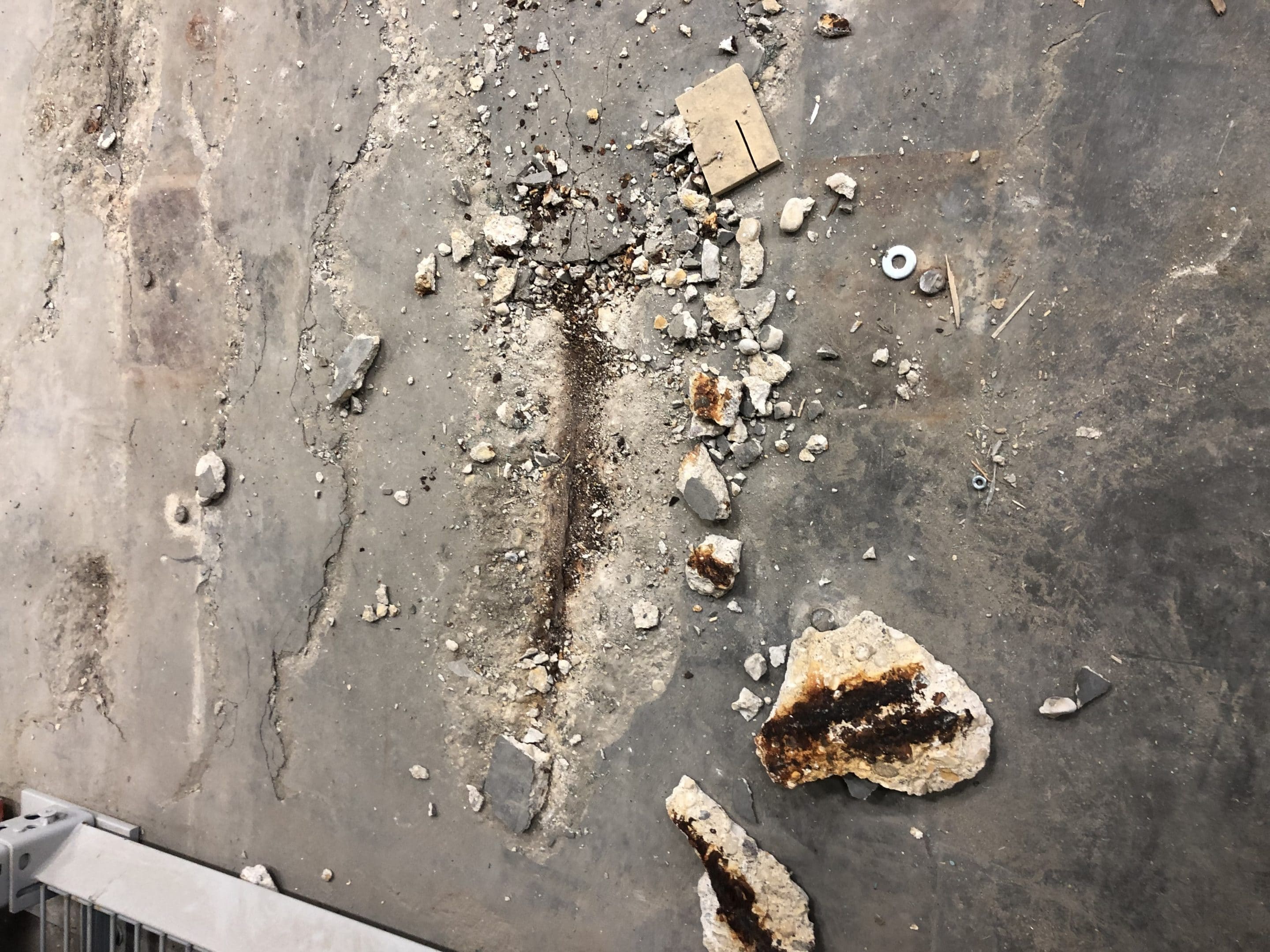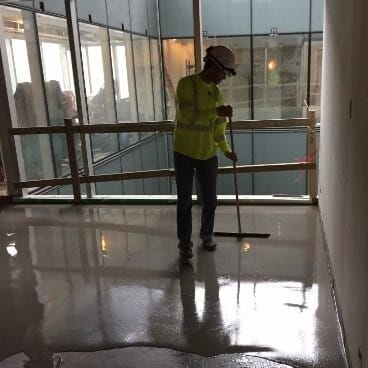
There are numerous signs that your concrete may be deteriorating, and none of them look good. You can see surface cracks, a clear sign that the quality of your concrete has gone down; you can also see spalling, when flakes of concrete begin to break off from the surface. Sometimes, you may even seen reddish spots on the surface of your concrete, a sign that rust has begun to affect the rebar used. Rust is particularly problematic for concrete flooring, because it can expand to ten times the normal size of steel, putting significant pressure on the surrounding materials and weakening the rebar. Corrosion of rebar is almost impossible to avoid, because it comes chiefly from environmental factors; water is what is causing the corrosion in most cases, but how is it getting to the rebar?
Rebar is set into concrete in a highly alkaline environment; fresh concrete has a pH of around 12.5. When the rebar is set, a chemical reaction between the steel and the alkaline concrete creates a layer of iron oxide around the rebar; this layer helps to prevent the rebar from corroding. The alkalinity of concrete, however, is reduced over time by an influx of CO2 in a process known as carbonization. The CO2 enters the concrete from the atmosphere slowly, over time. Eventually, it reaches the rebar and corrodes the layer of iron oxide, and water and other environmental influences will begin to corrode the rebar, leading to rust and a less stable structure for the concrete.
The other major contributor to corrosion is known as chloride attack. This form of corrosion is particularly problematic because it tends to be focused in one area; rather than the slow, pernicious rusting of carbonation, chloride can quickly eat through a section of rebar. There’s a variety of ways the chloride might reach rebar; if you use de-icing salts regularly, the chloride from the salts might get to the metal. Coastal environments are particularly susceptible to chloride attack, because the salts present in the sea find their way into the environment, on the wind, water or even on people’s shoes. Due to the fast-acting nature of chloride attack, if you see any rusting or spalling, it’s important to test your concrete as soon as possible.
There’s a variety of tests that can be done to verify the chemical composition of concrete, including the use titration tests, cover meters, and thermal imaging. These tests are useful for ascertaining the cause of corrosion, so you can take appropriate precautions against the culprit. Depending on the extent of the damage, your concrete flooring may need to be repaired or replaced.
Typically, using specialized Concrete repair techniques are preferred over complete and full depth of the affected concrete.
Process: Weak and delaminated concrete is removed down to sound concrete. Corroded rebar is cleaned back to white steel. Finally, specialized repair mortars are troweled into place. Many times, forklift traffic can resume after only 4 hours!
TC Floors is a specialized industrial flooring contractor with years of experience with concrete flooring; we’ll be able to deduce what has caused the corrosion, conduct any needed repairs, and advise you as to how to mitigate the impacts of corrosion in the future.

